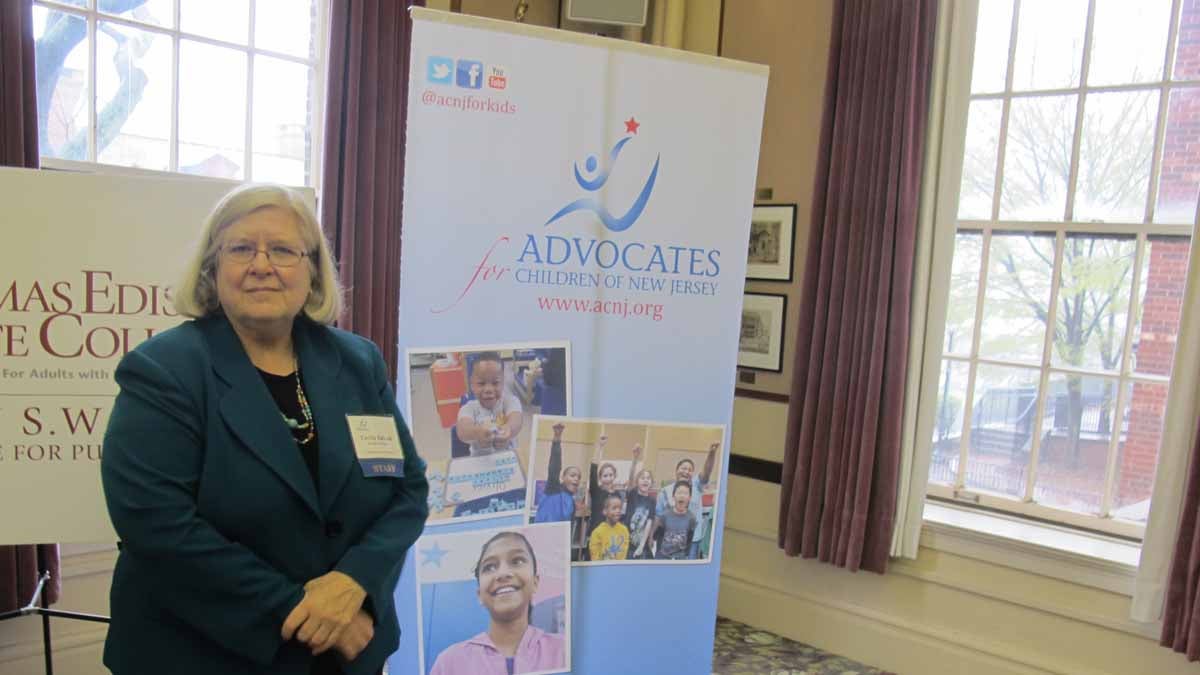Report on NJ kids’ well-being finds racial disparities

Cecilia Zalkind, executive director of Advocates for Children of New Jersey details the latest Kids Count findings at Thomas Edison State College in Trenton. (Phil Gregory/WHYY) (photo by Phil Gregory)
The latest Kids Count report on key measures of children’s well-being in New Jersey finds significant racial disparities.
Hispanic and black children in the Garden State are more likely to be poor and unhealthy, struggle with school, and be involved in foster care or the juvenile justice system, said Cecilia Zalkind, executive director of Advocates for Children of New Jersey.
The data point to an urgent need for public policy to address the inequities, she said.
“Certainly our state is looking at its economy, the budget, the pension payment, but I think we look at this as kids are the state’s infrastructure too just as much as roads are,” Zalkind said Monday. “So they need to pay attention to this.”
Funding additional day care and preschool services would help ease the effects of poverty, according to advocates.
“Sick leave, livable wages, SNAP programs so that kids are actually provided lunch and breakfast in school,” said Barbara George Johnson, executive director of the Institute for Public Policy at Thomas Edison State College. “Early childhood education is critical. We know that. How do we make sure we have full daycare services and pre-K services?”
Advocates are also pushing for a restoration of the state’s earned income tax credit for low-income families.
WHYY is your source for fact-based, in-depth journalism and information. As a nonprofit organization, we rely on financial support from readers like you. Please give today.




